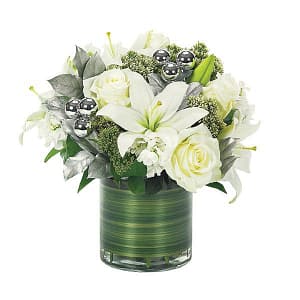
Ultimate Guide to Keeping Flowers and Plants Fresh and Vibrant
Fresh flowers bring joy and beauty to any space, but keeping them fresh for as long as possible requires proper care. Whether you’re tending to roses, orchids, or dish garden plants, following the right steps can significantly extend their lifespan. This guide offers practical tips for various types of flowers and plants, ensuring they stay vibrant and lovely.
Table of Contents
- Rose Care
- General Flower Care
- Dish Garden Plants
- Succulent Dish Garden
- Money Tree
- Orchid Plants
- African Violet Plants
- Peace Lily Plant
- Bamboo Plant
- Poinsettia Plant
Rose Care
Roses are a classic favorite, known for their elegance and beauty. To ensure your roses remain fresh and vibrant, follow these essential care tips:
1. Use Lukewarm Water
- Why: Roses absorb water more effectively when it’s lukewarm.
- How: Fill your vase with lukewarm water before arranging your roses. This helps the flowers stay hydrated and fresh.
2. Snip the Stem
- Why: Cutting the stem increases water absorption.
- How: Trim about ¾ of an inch from the bottom of each stem at a 45-degree angle. This practice allows the roses to drink more water.
3. Use Flower Food
- Why: Flower food contains nutrients that promote longevity.
- How: Add the provided flower food packet to the vase water. Ensure it dissolves completely to nourish your roses.
4. Change the Water Regularly
- Why: Fresh water prevents bacterial growth.
- How: Change the water every two days. Clean the vase thoroughly and refill with fresh lukewarm water and flower food.
5. Keep Cool in Indirect Sunlight
- Why: Direct sunlight can cause wilting.
- How: Place your roses in a cool location with indirect sunlight. Avoid windowsills and hot spots.
General Flower Care
For a variety of flowers, follow these general care instructions to extend their freshness:
1. Fill the Vase Properly
- Why: Proper hydration is crucial for flower health.
- How: Fill the vase two-thirds full with fresh, lukewarm water and add flower food to provide a nutritious environment.
2. Remove Foliage Below the Water Line
- Why: Submerged leaves rot and foster bacteria.
- How: Strip away any leaves or foliage that will be below the water line to keep the water clean.
3. Trim Stems Correctly
- Why: Trimming improves water uptake.
- How: Cut stems at a 45-degree angle, about ¾ of an inch from the bottom, to increase surface area for absorption.
4. Change Water Regularly
- Why: Prevents bacteria and odors.
- How: Refresh the water every two days and clean the vase to keep your flowers healthy.
5. Keep in a Cool Area
- Why: Temperature affects flower lifespan.
- How: Position flowers in a cool area away from direct sunlight and heat sources to prevent premature wilting.
Dish Garden Plants
Dish gardens are beautiful and easy to maintain with the right care:
1. Moist Soil and Bright Light
- Why: Promotes healthy growth without overwatering.
- How: Keep soil moist but not waterlogged. Place the garden in bright, indirect sunlight.
2. Avoid Standing Water
- Why: Prevents root rot.
- How: Ensure proper drainage in the container to avoid water accumulation at the bottom.
Succulent Dish Garden
Succulents are low-maintenance plants that thrive with minimal care:
1. Bright Indirect Sunlight
- Why: Ensures healthy growth.
- How: Position succulents where they receive bright, indirect sunlight but are protected from harsh rays.
2. Water Sparingly
- Why: Overwatering leads to root rot.
- How: Only water when the soil is completely dry. Check moisture by touching the soil surface before watering.
Money Tree
Money trees are popular for their attractive appearance and supposed good luck:
1. Bright Indirect Sunlight
- Why: Supports healthy foliage and growth.
- How: Place in a spot with bright, indirect sunlight for optimal results.
2. Rotate Monthly
- Why: Ensures even growth on all sides.
- How: Rotate the plant monthly to allow all sides equal exposure to light.
3. Water Thoroughly
- Why: Avoids waterlogged soil while maintaining moisture.
- How: Water thoroughly, then allow the soil to dry out between waterings.
4. Feed Regularly
- Why: Promotes growth and vitality.
- How: Fertilize during the spring and summer to support healthy development.
Orchid Plants
Orchids require specific conditions to thrive and bloom beautifully:
1. Temperature and Humidity
- Why: Optimal conditions support blooming.
- How: Maintain temperatures between 60-80 degrees Fahrenheit with high humidity.
2. Avoid Drafts
- Why: Drafts cause stress and hinder growth.
- How: Keep orchids away from drafts and cold spaces to protect them.
3. Fertilize Regularly
- Why: Supports blooming cycles.
- How: Fertilize orchids during warmer months with a balanced fertilizer to nourish them.
4. Support Stems
- Why: Prevents breakage of long stems.
- How: Use stakes to support larger orchids as blooms emerge.
5. Water Every 7-10 Days
- Why: Prevents overwatering and root rot.
- How: Check soil moisture before watering. Water thoroughly and let excess water drain.
African Violet Plants
African violets are delicate plants that thrive with specific care:
1. Indirect Sunlight
- Why: Direct sunlight can burn the leaves.
- How: Place in a location with bright, indirect sunlight for best growth.
2. Keep Soil Moist
- Why: Prevents drying out and promotes growth.
- How: Keep the soil moist but well-drained to avoid root rot.
3. Avoid Drafts
- Why: Cold air can damage the plant.
- How: Position away from vents, fans, and doorways to avoid exposure to drafts.
Peace Lily Plant
Peace lilies are popular indoor plants known for their air-purifying qualities:
1. Light Watering
- Why: Overwatering is a common issue.
- How: Water when the top inch of soil feels dry. Ensure proper drainage.
2. Indirect Light
- Why: Direct sunlight can scorch leaves.
- How: Place in a spot with indirect light to keep the leaves healthy.
3. Optimal Temperature
- Why: Temperature affects growth.
- How: Maintain temperatures between 65-80 degrees Fahrenheit for a thriving plant.
4. Avoid Drafts
- Why: Protects from stress and damage.
- How: Keep away from drafts and sudden temperature changes.
5. Fertilize Seasonally
- Why: Encourages blooming and growth.
- How: Fertilize during spring and summer with a balanced fertilizer.
6. Caution
- Why: Mildly toxic to pets and humans.
- How: Keep out of reach and wash hands after handling to ensure safety.
Bamboo Plant
Bamboo plants are versatile and easy to care for with proper conditions:
1. Indirect Light
- Why: Too much light can harm bamboo.
- How: Position in indirect light, suitable for indoor environments.
2. Use Bottled Water
- Why: Chemicals in tap water can be harmful.
- How: Use bottled or distilled water to keep the soil moist without chemicals.
3. Ideal Temperature
- Why: Temperature influences growth.
- How: Maintain temperatures between 65-90 degrees Fahrenheit for optimal growth.
4. Monthly Fertilization
- Why: Supports healthy growth.
- How: Fertilize monthly to nourish the bamboo.
Poinsettia Plant
Poinsettias are holiday favorites known for their vibrant colors:
1. Indoor Temperatures
- Why: Fluctuations can stress the plant.
- How: Keep in temperatures between 65-75 degrees Fahrenheit, avoiding drafts.
2. Indirect Sunlight
- Why: Direct sunlight can fade colors.
- How: Place in indirect sunlight to maintain vibrant colors.
3. Weekly Watering
- Why: Overwatering can cause root rot.
- How: Water weekly when the soil is dry to the touch, allowing thorough drainage.
Conclusion
By following these guidelines, you can ensure that your flowers and plants stay fresh and vibrant for as long as possible. Proper care tailored to each type of plant will help maintain their beauty and health. Happy gardening! If you need any floral bouquets or plants for special occasions, please visit our local floral near you!



